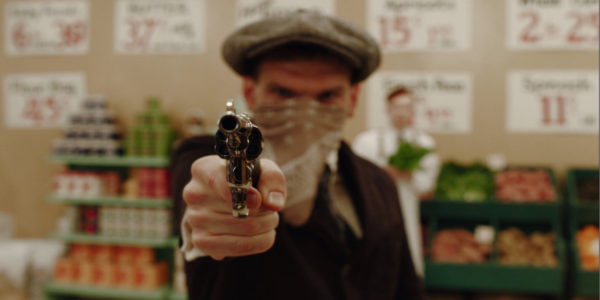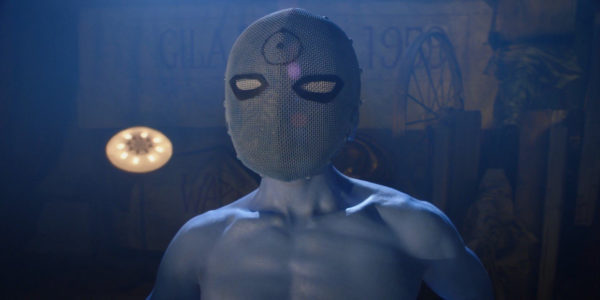WATCHMEN (S1 E2) “Martial Feats Of Comanche Horsemanship”: Lives With The Spirit Of The Comic

Where the first episode of Watchmen opens with a race riot this opens with the writing of a letter, asking the soldiers of color of World War I to see how much better it is in Germany, to see how the Americans and the British are exploiting them where they cannot enjoy the same rights as the whites.
This is an actual historical document given throughout Germany at the time, and while the document itself doesn’t play into effect in the episode it presents a mood. A bleak, challenging mood certainly, but a mood nonetheless. While all the racial themes have been moved to the background for the majority of this episode, what Watchmen persists on is that it’s still there. It’s there, it’s never going to not be there. Our past still defines our future.
Generational Gap
It doesn’t linger on this intro of course, like the first episode it dives straight into the main storyline and continues from the cliffhanger of the last episode. What’s most eye catching in these opening scenes isn’t just the beautiful blues in the cinematography but also the visual, and audio, transitions between scenes.
A key example of this is a scene between Judd and Angela in the hospital. It’s a great flashback scene, highlighting context to a previously known event, but what makes it stand out is how it ends and transitions into the next scene. Creating a juxtaposition between Judd’s line “I let you down” and Angela’s very literal letting down of Judd from the tree where he hung creates a smooth, if a little on the nose, transition.

And it ties well into the spirit of the comics. Throughout the comic, Gibbons and Moore use framing and blocking to create panel to panel transitions that smoothen out the pacing somewhat. As Lindelof continues further away from the themes and the politics of the comic he seems to remain in tact with its sensibilities and its ideas. This idea has been expressed rather fully by people better written so the topic won’t be discussed in length here, but it’s one of the things that keeps this show going, that keeps the episodic interest high. Not only are there mysteries, needle drops, heroes, and backstories galore, there’s a sense that it’s in the world of Watchmen without too many references or poke and winks.
Hero Stories
There’s a jab in here, towards the middle of the episode, where the start of the TV show American Hero Story is shown. Not only a poke at American Crime Story but notably at Zack Snyder as well, and how he shot the 2009 Watchmen film. Opening the episode within the episode with an overly dramatic monologue and slow motion shots and transitioning to an action scene that all but screams Snyder, Lindelof not only (lovingly) pokes at Snyder here but it calls back to Tales Of The Black Freighter, Moore’s comic within a comic that stood as a parallel to storylines and as a critique of other writers at the time.

Framing a show within a show to critique seems like a lot of fun. An overly dramatic, overdone parody of Lindelof‘s contemporaries amidst the racism and the lynchings provides a bit of a break at the very least. Hell, maybe an entire episode of Hero Story can be pieced together by the end of the show.
Behind the Mask
What Watchmen also gives us this episode is a closer look into side characters. More specifically, Tim Blake Nelson’s Looking Glass and Don Johnson’s Judd Crawford. Looking Glass spends his nights alone, eating beans (a nod to Rorschach from Watchmen chapter 1) with his mask still half on watching television: Just as Rorschach in the novel was empty without his “face”, Looking Glass seems to be the same. He’s attached to the mask and the burdens and strengths that come with it. More of that will come soon I’m sure.
Judd, on the other hand, turns out to be a racist in hiding. Angela finds a Ku Klux Klan outfit in his office, showing not only that he may have skeletons in his closet but that the badge he wore seems almost ironic now. In a similar fashion to how the iconic smiley face ironically was worn by a man who only saw the darkness in the world the badge Judd wore is ironically worn by a man who goes for what the police are fighting against.
Whether he was a Kavalry member or not that’s a whole other question, but the only thing that’s certain is that more pins keep getting lined up for the show to knock down. This is just another.
Old Friends
Jeremy Irons’ weird castle in the middle of somewhere with two clones destined to recreate Dr Manhattan’s origin in a shoestring basement play may just be the strangest story from Watchmen, unsurprisingly. While it’s never confirmed that Irons is playing Veidt/Ozymandias, it’s a safe assumption. Intense knowledge of Dr Manhattan’s origin, wits enough to clone people, and reaches far enough to have Dr Manhattan himself building replicas of his castle somewhere on Mars seems well enough evidence to cover this theory.

Now, what Veidt is doing with Manhattan’s origin, burning bodies, and trying to mess with time is again, unclear. Is he trying to stop time? Make another Manhattan? Who knows. It seems right now only Lindelof does. It’s a wonderful story nonetheless, the beautiful set design and the hilarious recreation of what’s maybe the novel’s most famous moment is great.
Conclusion
Watchmen is a bit of a weird one right now. Looking back on these episodes it seems rather confusing, because that’s just how it is. There’s the elements for setup at play here, the small fragments of information, the connecting pieces, but not a clear puzzle to go with the pieces. There’s seven more episodes ahead, and just as the novel slowly revealed information this seems to do the same. More information is to come, more layers to be revealed. All that’s left to do is wait.
Watch Watchmen on HBO Go and HBO Now.
Does content like this matter to you?
Become a Member and support film journalism. Unlock access to all of Film Inquiry`s great articles. Join a community of like-minded readers who are passionate about cinema - get access to our private members Network, give back to independent filmmakers, and more.













